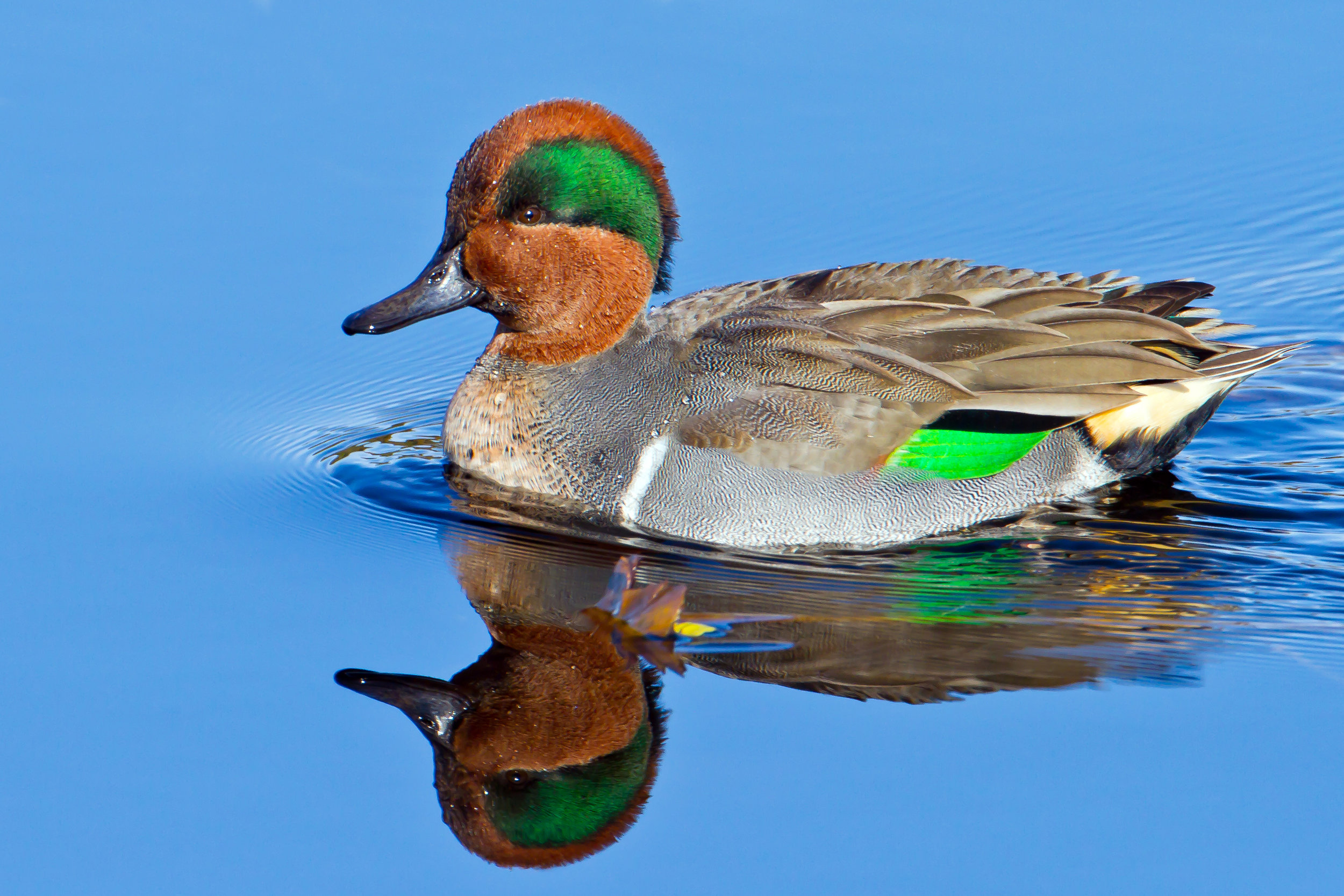Bird of the Month: Green-winged Teal
By Hugh Jennings
PC: Mick Thompson (Green-winged Teal)
Scientific Name: Anas crecca
Length 14 in
Wingspan 23 in
Weight: 12 oz
AOU Band code GWTE
The Green-winged Teal (GWTE) is about 14” long with a wingspan of 23” and a weight of 12 oz. (350g). The genus name Anas (AY-nas) is Latin for duck. The species name crecca (CREK-ah) is a Latinized onomatopoetic word to express the quack or creak note of this duck.
This is our smallest dabbling duck. It is smaller and more compact than the other teals. They are active and agile and can be found in small flocks on shallow, marshy or muddy ponds. The GWTE feeds mainly by dabbling its bill at the surface of the water or mud.
Males have a gray body with a white vertical stripe on the side at the start of the wing The head is reddish-brown with a bright green patch behind the eye. The bill is small and black. There is a buffy yellow streak on the rump commonly known as a “buffy rump”. In eclipse plumage the male looks like the female. The female is mottled brown with a dark streak through the eyes. A green speculum in the wing is usually visible.
A subspecies of the GWTE is the Eurasian, or Common, Teal. The Eurasian male is similar but instead of a white vertical stripe it has a white horizontal stripe. GWTE flocks in flight seem very fast due to their small size, with rapid twisting and turning in unison.
In summer are found on freshwater ponds and lakes. In winter are also seen on rivers and in sheltered coastal marshes. They are a common local summer resident east of the Cascades and in winter on both sides of the Cascades in Washington State.
The GWTE diet is mostly plant material, especially on seeds and grasses, sedges and pondweeds. Pairs usually have already mated when they arrive at the breeding grounds. One courtship display consists of the male rearing up out of the water, arching its head forward and down to shake the bill very rapidly in the water while giving a sharp whistle.
The nest of grasses, weeds and down is put in a depression in the ground and concealed in grass or brush. The nest can be up to a mile from water. There are 6-11 pale olive-buff eggs, rarely as many as 15 or 18,. Incubation is 21-23 days and the young leave the nest a few hours after hatching. The female cares for the ducklings and may return to the nest for the first few nights. The young find all their own food and fledge at about 35 days.
After breeding the adults may go through their annual molt near the nesting area, or they may move hundreds of miles in late summer before going through the flightless stage of molt. (For those of you still wondering what “onomatopoetic” means; it is when the name imitates the sound, e.g., for birds, the Chickadee and Killdeer, or general words like “buzz”).

